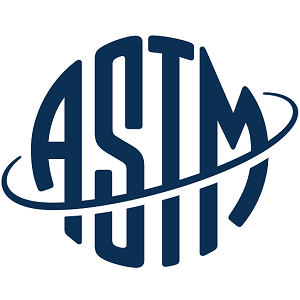


| Standard Number | ASTM E3269-21 |
|---|---|
| Organization |
American Society for Testing and Materials
|
| Level | National |
| Category | Test Method | Characterization | Measurement |
| Status |
|
1.1 This test method describes the use of inductively coupled plasma optical emission spectrometry (ICP-OES; also includes ICP-AES, where AES is atomic emission spectrometry) or inductively coupled plasma mass spectrometry (ICP-MS) for the determination of the mass fraction of particle bound gold (Au) in colloidal Au suspensions. Particle bound Au is defined as the mass of Au associated with the nanoparticle (NP) fraction and strongly adsorbed to the particle surface. Unbound Au is the fraction of Au in the native suspension not associated with the Au nanoparticle fraction that is, the dissolved Au existing in solution as a complex or free ion. The mass fraction of particle bound Au is determined by subtracting the mass fraction of unbound Au measured in acidified subsamples of the particle-free supernatant from the total Au mass fraction measured in acid-digested subsamples of the colloidal Au suspension. The particle-free supernatant is obtained after centrifugation of the colloidal Au suspension. This standard prescribes the use of an appropriate internal standard and calibration using either external standardization or single-point standard additions.
1.2 Colloidal gold suspensions with AuNP diameters ranging from 1 nm to 100 nm can be determined with this method.
1.3 The standard is not limited to particles with a uniform Au composition and may be applicable to a core-shell particle with a Au shell treatment.
1.4 This standard is specific to Au. The method may be applicable to other elements measurable by ICP-OES or ICP-MS but is limited to nanoparticles that are not reactive in aqueous suspension.
1.5 No detailed instructions for operating instrumentation are provided because of differences among various makes and models. Instead, the analyst shall follow the instructions provided by the manufacturer of their particular ICP-OES, ICP-MS or centrifuge instrument, especially with regard to optimization of the instrument settings.
1.6 The values stated in SI units are to be regarded as standard. No other units of measurements are included in this standard.
1.7 This standard does not purport to address all of the safety concerns, if any, associated with its use. It is the responsibility of the user of this standard to establish appropriate safety, health, and environmental practices and determine the applicability of regulatory limitations prior to use.
1.8 This international standard was developed in accordance with internationally recognized principles on standardization established in the Decision on Principles for the Development of International Standards, Guides and Recommendations issued by the World Trade Organization Technical Barriers to Trade (TBT) Committee.
